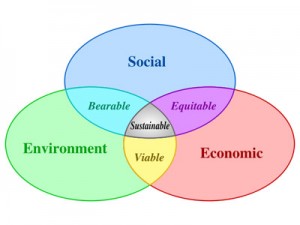It wasn’t until a recent tutorial, in which our TA told us to brainstorm social enterprises and share them with the class, that I realized how unconventional or uncommon non-profit organizations and social enterprises seem to be. Apart from the biggest ones, such as The Canadian Cancer Society or Toms, I was unable to come up with any non-profit organizations or social enterprises without using Google as an aid.
It is for this reason that I found a blog post by a fellow classmate, Ashley Belzil, so fascinating. Her post is about an organization dedicated to the microfinance of low-income people in need. This non-profit organization, called Kiva, is based off of the act of lending, where virtually anybody can sign up and lend a certain amount of money to low-income individuals in order to support their business and/or aid in their ambitions to overcome poverty and low living standards.
I found that this organization ties together many concepts we have discussed in class. It is fundamentally based off of the concept of microfinance, but it is also important to keep in mind the fact that it is a non-profit organization that has the potential to support struggling enterprises. I was astonished at the ability of one small organization to change the lives of those in need in such substantial ways. The organization’s potential made me realize that good things really do come in small packages… whether it be in the form of a small, lesser-known non-profit organization, or in the form of one of its $25 loans.
About Kiva:
http://vimeo.com/16991128
Sources:
http://www.kiva.org/
https://blogs.ubc.ca/ashleybelzil/2012/11/13/the-gift-of-giving/











